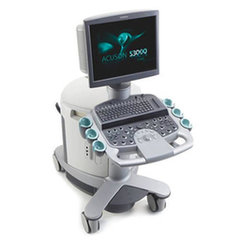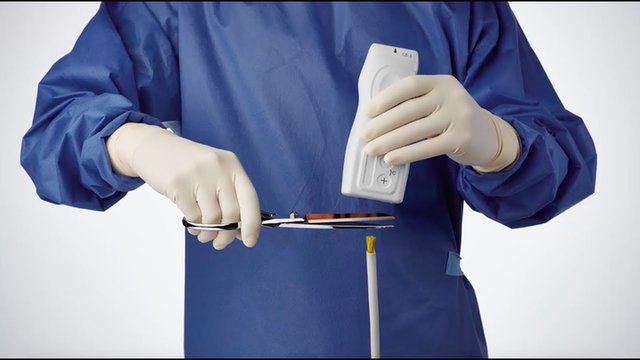







Ultrasound Blends
with
Technology
Anthony Tardi
Director General Imaging Ultrasound
Siemens Healthineers
Ultrasound is known to produce excellent real-time diagnostic imaging. As technology is advancing at a rapid pace, companies in the ultrasound arena are working meticulously to keep up with speed. The development and adoption of future-ready hardware and software into the radiology space makes it possible to confront emerging challenges. A case in point is the use of cable-free ultrasound transducers that have been the outcome of the blend of radiology and wireless technology. With the introduction of the world's first wireless transducer Acuson Freestyle system by Siemens Healthineers, the time consumed for sterile field preparation reduced significantly. Also, the use of the wireless transducer has reduced the risk of sterile field contamination from the cable to a great extent, which in turn provides the user the ability to move freely around the workspace. The wireless transducer has been a breakthrough innovation in the interventional radiology environment. With the advancements in ultrasound, wireless interventional radiology has made a significant impact in overcoming the clutter around a patient when the test is in progress, benefiting critical cases such as cardiology and related surgery.
As the healthcare industry evolves, we can expect ultrasound to be the gateway to other imaging modalities because of advantages such as cost-effectiveness, portability, and reliability. Additionally, innovations such as contrast-enhanced ultrasound can be expected to become a benchmark that needs to be followed in the healthcare industry. In hospitals and health departments across the U.S., the implementation of standards for ultrasound is limited. One can hope to see new ultrasound applications and innovations introduced into the market to answer tough clinical questions instead of expensive or risky interventions.
Ultrasound Pain Points
One of the challenges faced by Ultrasound experts is that, as the rate of obesity increases among patients, there is a need to generate more reliable diagnostic images, economically and ergonomically. In 2016, Center for Disease Control and Prevention published a report which stated that the prevalence of obesity in adults is estimated at around 39 percent, posing a challenge to ultrasound and radiological organizations. To address this challenge, organizations need to ensure the use of advanced technology to deliver fail-safe solutions.





The outcomes of the ultrasound test are largely influenced by the transducer and the skills of the sonographer using it. In ultrasound, one gets to hear the term "ultrasound variability" which is accredited to a huge skill gap. From a solution provider perspective, we see many organizations trying to remove the ultrasound variability by standardizing protocol, order, and annotations in which they conduct the examinations. Additionally, they perform competency testing while allowing sonographers to proceed with a specific type of examination. It usually helps to make sure that they have the latest and best-in-class technologies that are designed to address the variability in ultrasound. and Innovation Steals the Limelight
A wide gamut of variables affects the decision of
buying a certain ultrasound system. Another factor that impacts the decision-making is the shifting geographies, which results in diverse patient demographics. In some states, the impact of obesity is higher, affecting the ultrasound process itself. The use of technologies can address these shortcomings by reducing the number of follow up examinations. Moreover, innovations can help in influencing the decisions made by healthcare customers. With a sudden surge in the number of cases of chronic liver diseases, ultrasound-based technologies can be useful in providing valuable diagnostic information. This key ability is among the many others that prove useful in choosing an appropriate ultrasound manufacturer.
Real-time 3D is considered to have a great impact, based on the clinical application that it
is combined with. While radiology has vast opportunities and benefits through contrast-enhanced ultrasound and electrography, cardiology is beginning to reap the benefits of ultrasound advancements. Ultrasound has benefitted radiology by quantifying tissue stiffness and characterizing liver lesions. With time, we should be able to find other aspects of tissue that can be quantified using 3D ultrasound.
One of the biggest concerns in the ultrasound space is ergonomics. About 80 to 90 percent of sonographers struggle with muscular skeletal (MSK) injuries. Technologies that can amplify the ergonomic aspect make it possible to reduce the pressure applied to a patient in order to image the part while reducing the time and complexity involved in the process. We brought in 365 ultrasound users and conducted over 175 workshops to help design a system that may prove critical in reducing ergonomic injuries. Also, the simplicity would make it possible for the newer users in ultrasound to adapt and understand the usage of innovative devices easily.
"As the healthcare industry evolves, we can expect ultrasound to be the gateway to other imaging modalities due to the benefits of being inexpensive, portable and reliable."


